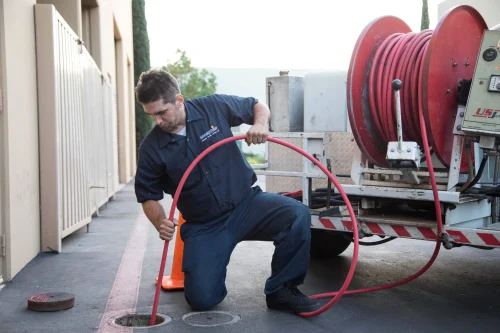Introduction
Cold weather can pose unique challenges to your plumbing system, and one common issue is the freezing of sewer lines. In this blog post, we'll explore the causes of sewer line freezing, discuss the potential consequences, and provide valuable tips on how to prevent this problem, including the role of sewer and drain cleaning in maintaining a functional and freeze-resistant plumbing system.
- Understanding the Causes of Sewer Line Freezing
- Low Temperatures: Extended periods of sub-freezing temperatures can cause the water in sewer lines to freeze.
- Inadequate Insulation: Poorly insulated sewer lines, especially those located in exterior walls or unheated spaces, are more susceptible to freezing.
- Shallow Burial Depth: Sewer lines that are buried too close to the surface may be vulnerable to freezing in extreme cold conditions.
- Consequences of Sewer Line Freezing
- Blockages: Frozen water in sewer lines can lead to blockages, restricting the flow of wastewater and causing backups.
- Pipe Damage: The expansion of frozen water can exert significant pressure on sewer pipes, potentially leading to cracks, leaks, or even pipe bursts.
- Inconvenience and Health Risks: Sewer line freezing can result in the inconvenience of blocked drains and toilets, and there is also the risk of exposure to unsanitary conditions.
- Tips to Prevent Sewer Line Freezing
- Insulate Exposed Pipes: Ensure that sewer lines exposed to cold air are adequately insulated, especially in unheated areas or against exterior walls.
- Maintain Adequate Room Temperature: Keep areas with exposed sewer lines at a temperature above freezing, even if those areas are not actively used.
- Use Heat Tape: Apply heat tape to vulnerable sewer lines, providing a consistent source of warmth to prevent freezing.
- Ensure Proper Burial Depth: When installing new sewer lines, ensure they are buried at an adequate depth below the frost line to minimize the risk of freezing.
- Run Warm Water: During extremely cold weather, periodically run warm water down drains to help prevent freezing.
- Sewer and Drain Cleaning: Regular sewer and drain cleaning can help remove debris and buildup that may contribute to blockages and reduce the risk of freezing.
- The Role of Sewer and Drain Cleaning
- Preventing Blockages: Routine sewer and drain cleaning helps keep pipes clear of debris and potential blockages, reducing the likelihood of freezing.
- Professional Inspection: Plumbers can use sewer and drain cleaning services to conduct inspections, identifying any early signs of freezing or vulnerable areas in the sewer system.
- Hydro Jetting: High-pressure water jetting, a part of sewer and drain cleaning, can effectively remove any existing ice buildup and ensure optimal water flow.
- Consulting with Sewer and Drain Cleaning Experts
- Customized Solutions: Experienced plumbers specializing in sewer and drain cleaning can provide tailored solutions based on the specific conditions of your plumbing system.
- Emergency Response: In the event of freezing-related issues, professionals can offer timely and effective solutions to address blockages and prevent further damage.
Conclusion
Preventing sewer line freezing in cold weather requires a combination of proactive measures, including insulation, heat tape, and regular sewer and drain cleaning. By understanding the causes and consequences of freezing and implementing these preventative tips, homeowners can safeguard their plumbing systems and minimize the risk of disruptions during winter months. Consulting with plumbing experts ensures a comprehensive approach to maintaining a freeze-resistant and fully functional sewer system, contributing to the overall resilience of your home's plumbing.
